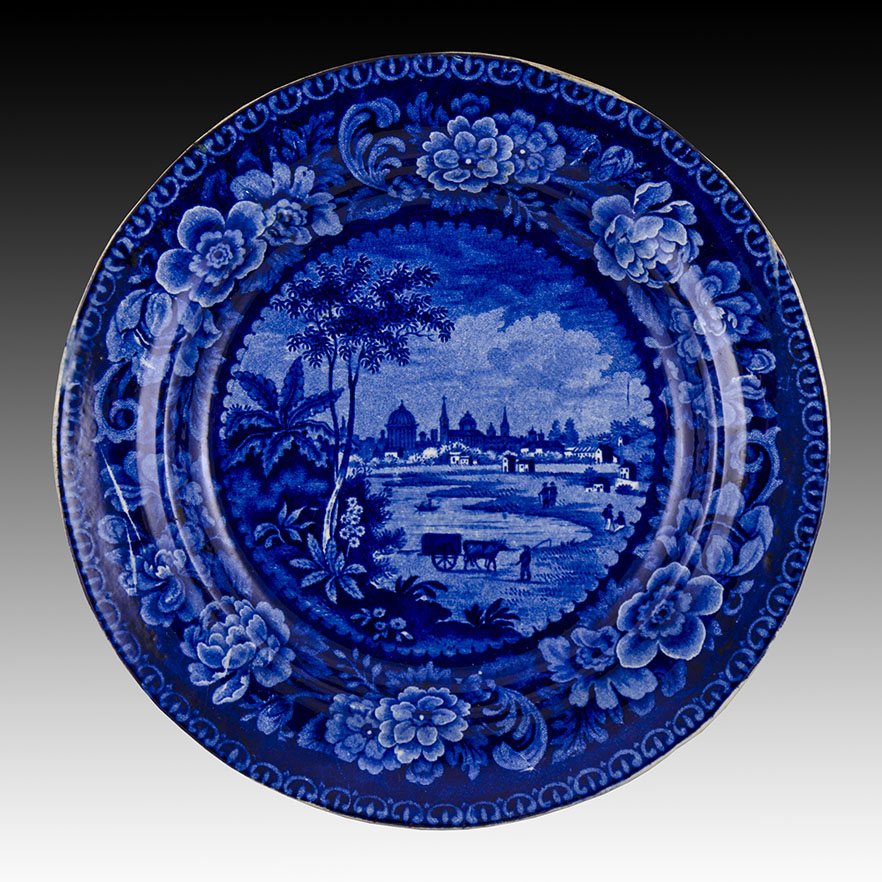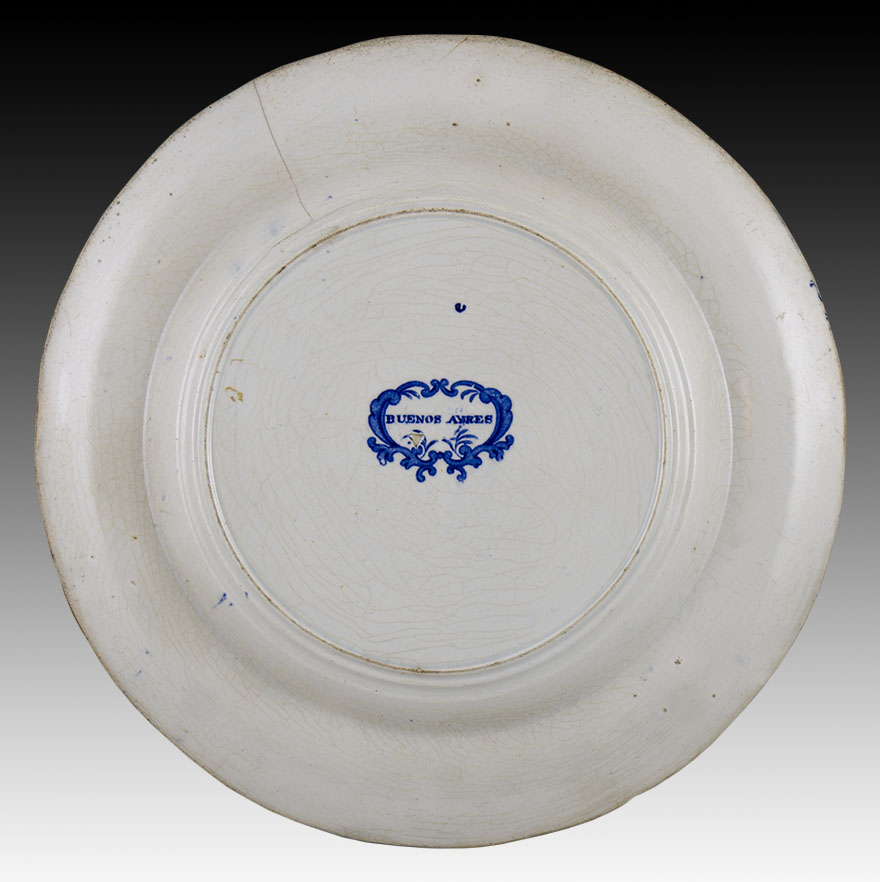BACK TO TOP
HISTORICAL / MILITARY OBJECTS
Plate with a view of Buenos Aires.
Staffordshire. England. First half of the XIX century.
Porcelain plate decorated in cobalt blue. Diameter: 25 cm / 9.84 in. Depth: 2.5 cm / 0.98 in. On the back, inside a baroque cartouche printed in the same blue, the legend “Buenos Ayres”. In good condition, with a small fracture at 1100 hours on the edge of the wing that does not affect the central image.
In the center, the plate has a view of Buenos Aires derived from the engraving made by Félix de Azara in 1809 (1), in turn inverted inspiration from the view of Fernando Brambila drawn around 1795-1798 (2). In other words, while the original view was taken from the south, in Brambila and in this plate it seems to be the city seen from the banks of the Río de la Plata to the north. It has, as in the paper versions, the profile of the city with its towers and domes, and a cart pulled by oxen. It varies, with respect to the original versions, in the vegetation on the left, making it more exotic here, by incorporating palm trees. The image is framed by a profuse "garland" of flowers, buds, and leaves. The rim itself consists of a band of scrolls.
Some scholars of English pottery have attributed this plate to the Davenport Manufacture, but others, with better arguments, have assigned it to James and Ralph Clews. In fact, the Clews, who were among the most famous potters in Staffordshire, produced a Series of Towns, notably Philadelphia, Albany, Louisville, Quebec, Chillicothe and Sandusky of North America. According to references, this view of Buenos Ayres appears in Historical Staffordshire, An illustrated checklist, (Arman, 1974) under number 18. This work indicates that a soup plate and a bowl were also produced with this same motif. For this series of views, a book by Ellouise Baker Larsen Historical Views on Staffordshire is cited in the bibliography. Although Baker Larsen characterizes this plate as being of “unknown manufacturer”, he describes the theme of the frame as “Large roses in groups” and includes the view of Buenos Ayres as one of the motifs in an alleged series entitled “ South America”, although it is unknown what other cities were included.
It was manufactured in Staffordshire. This English district became an important center of porcelain production since the 18th century, including in its catalogs plates -and other objects, such as jugs, cups and fountains- with different transferred scenes, which occupied the central place, and were presented contained within a guard of floral motifs. The technique consisted of engraving a copper plate -similar to those used in engravings on paper-, and once the image was inked, it was transferred to the porcelain using a sheet of flexible paper, which was first fixed with a low-temperature firing. and once glazed, they were baked again.
Notes:
1. Engravings derived from the view of Brambila:
https://www.hilariosubastas.com/product-detail.php?slug=view-of-buenos-ayres
https://www.hilariobooks.com/product-detail.php?slug=vista-de-buenos-ayres-577
2. Engraving of Brambila, View of the City of Buenos-Ayres:
https://www.hilariobooks.com/product-detail.php?slug=view-of-the-city-of-buenos-ayres
Are you interested in selling some works?
Send us an email briefly indicating
which works you intend to put on sale, and we will respond. click here
Subscribe to our newsletter to be updated.
Check our Newsletters
